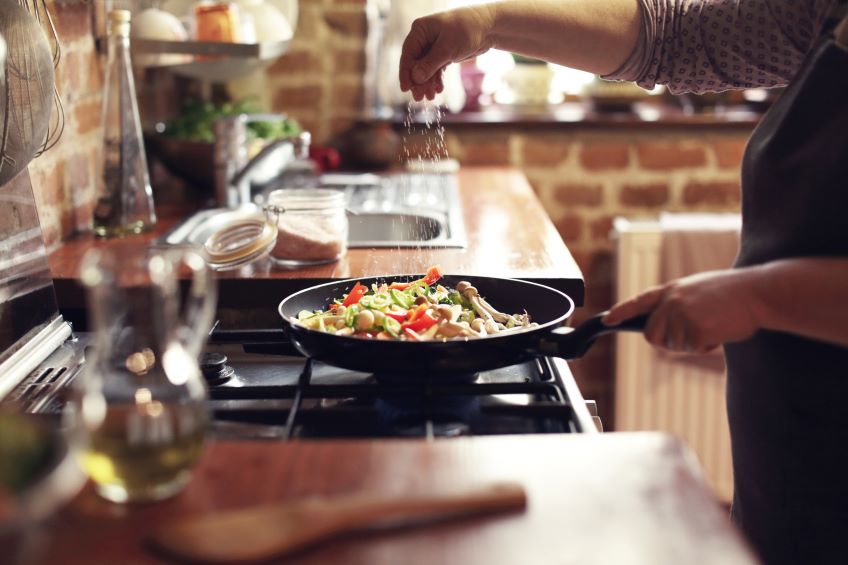
What if I were to tell you that there is a secret to making your food taste really mind blowing? What if I told you that it was right under your nose and even is one of our basic tastes? You may have guessed by now that it’s umami.
 When I started cooking professionally over 4 decades ago, I knew nothing about umami. For years, I cooked and analyzed dishes based on their flavors and the four basic tastes. I probably sought out umami without knowing it. But when I learned about umami and how to recognize it, my cooking changed. By consciously considering umami levels and how it balances with the other basic tastes, my food tasted deeper, richer, and more satisfying. As a chef, I now understand the power of umami.
When I started cooking professionally over 4 decades ago, I knew nothing about umami. For years, I cooked and analyzed dishes based on their flavors and the four basic tastes. I probably sought out umami without knowing it. But when I learned about umami and how to recognize it, my cooking changed. By consciously considering umami levels and how it balances with the other basic tastes, my food tasted deeper, richer, and more satisfying. As a chef, I now understand the power of umami.
What Does Umami Taste Like?
The first step in upping your umami game is to know what it tastes like. This is a stumbling block for enthusiasts and professionals alike. The reason is that many of us grew up in a world where we were never taught about umami. To learn what umami can do in food, simply start adding MSG to different recipes. If you can, try to keep some of the original, MSG-free recipe off to the side for a comparison. As MSG is pure umami, adding it allows you to taste the same preparation with and without the umami boost. Over time, you will be able to easily recognize the taste of umami and what it contributes to food. This is how I learned to use umami.
Does Your Dish Have Enough Umami?
The next step is to analyze the food you make not only for appropriate levels of salt, acid, sweet, and perhaps bitter, but also for umami. In another words, ask yourself if the recipe has enough umami or could benefit from a bit more. If your conclusion is to up the umami, you then have another question to consider. Should you use an ingredient rich in umami or just add pure umami? The answer depends on what you are making and your creativity. There are many ingredients loaded with umami such as aged cheeses (Parmesan in particular), dried mushrooms like shiitake, cured hams and sausages, sun-dried tomatoes, fermented soy products (soy sauce and miso), fermented fish sauce, Worcestershire sauce, and even ketchup. While these ingredients add varying levels of umami, they also add other flavor profiles that may or may not improve the dish.
Adding pure umami in the form of MSG is the other strategy for increasing umami. I always have it on my kitchen counter along with salt and pepper.
MSG contributes umami without additional flavor profiles. As such, I find it very useful when I only want to add umami. Also, unlike some of the umami rich ingredients, MSG is a crystal that instantly dissolves into your food for an instant increase in umami. It makes a great last-minute addition to perfect your dish.
Umami is also Important in Vegetarian Dishes
Before signing off on this post, I also want to specifically call out vegetarian and vegan cuisine. So often, I find that many of these dishes lack umami and thus flavor. For me, the addition of umami to vegetarian and vegan dishes is almost more important than it is in animal protein-based dishes. When I cook vegetarian and vegan cuisine, I find myself reaching for a pinch of MSG to give me the umami bump I want. The result is vegetarian and vegan foods that taste fuller and more complete—and most importantly more delicious.

